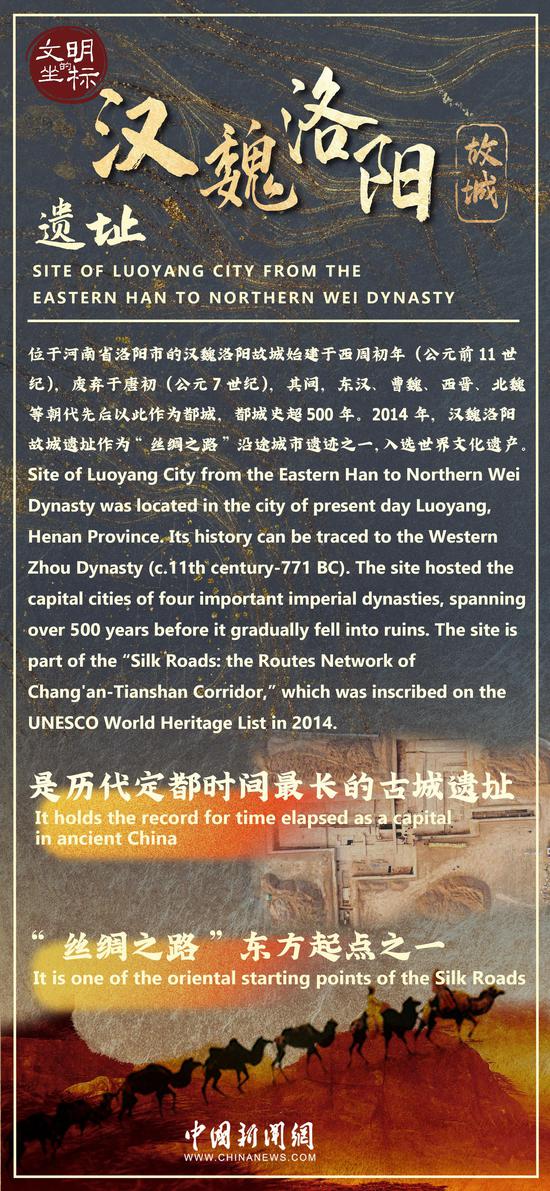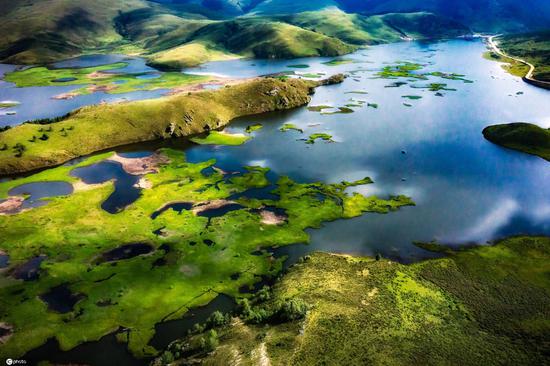(ECNS) -- 250 years ago, led by Wubashi Khan, the Torghut Mongols chose to leave the Volga River basin where they had lived for nearly one and a half centuries. After a tough journey, Torghut managed to return to Yili, Xinjiang, where they called "the place where the sun rises".
The year 2021 is the 250th anniversary of this significant migration across Eurasia. A China News Service reporter recently interviewed Ma Dazheng, deputy director of the national Qing History Compilation Committee and researcher of the China Frontier Research Institute of the Chinese Academy of Social Sciences.
Through retrieving and combing the history of the migration of many Chinese peoples, including Torghut Mongol's return, he put forward that the formation and consolidation of China's unification as a multi-ethnic country is an inevitable result determined by history.
Three reasons for Torghut's return to China
In this migration, Wubashi Khan led more than 33,360 households and over 168,000 people to return to China. With vivid words, Ma Dazheng described such a scene: At the lower reaches of the Volga River, the mid-winter in early January 1771 witnessed thousands of Torghut women, children, and old people riding on prepared carriages, camels and sleds. Escorted by cavalries, these migrating people set off one after another, leaving the foreign land. A sonorous voice rang in the air: "Our children and offspring will never be slaves. Let's go back to the place where the sun rises." According to Ma Dazheng, the reasons of Torghut’s return to the East can be explained in three levels.
The direct reason is the cultural conflict. In the 1630s, the Torghut moved to the Volga River Basin and lived there for more than a century. Torghut people were accustomed to maintaining their existing political system, economic form, language, religious beliefs, and customs, which sharply conflicted with the Russian Czar government’s attempt of controlling and enslaving them.
Homesickness, filled with a sense of belonging to a nation and country, is another powerful cause for the Torghut’s return to the East. As a unified multi-ethnic country, the Qing Dynasty’s operation in dealing with Torghut reflected its ethnic policy of “Benevolence plus Comfort”.
The deep reason rests upon the cultural identity of the Torghut people to their ancestral homeland. In the 53rd year of Kangxi (1714), when a delegation sent by Emperor Kangxi visited the Torghut, Ayuqi Khan asked the delegation about the political, economic situation, and other aspects of his hometown, showing great concern for the people who lived there. He confided to his relatives from his hometown that the Torghut people "shares similar clothes with China while has different clothes and languages in comparison with Russia."
Ma Dazheng said that the stability and cohesive strength of culture can surpass the limits of time and space. Cultural identification is always the "glue" to maintain order in a society. The basis of political and national identity is the deep foundation in cultivating the national unity consciousness of social members. Strong political, economic, and military strengths play key roles in unifying a country, but cultural identification is a more basic, stable, and deep-seated strategic essential, a "soft power" that cannot be replaced by external material powers.
He pointed out that the courageous uprising of the Torghut people against Russia showed their determination to return to the motherland. The contact between Torghut Mongolia and the motherland when they were living in Russia is the proof of the great cohesion formed among Chinese peoples during its long history, and Torghut 's return to the motherland is an unavoidable result.
The history of garrison reclamation and border defense of Chahar Mongolia’s moving westward to Xinjiang
In the late 1750s, the Qing government realized the unification of Xinjiang. During the 27th year of Qianlong (1762), the Qing government set up the "General governing Yili and other places" as the highest military and political official dispatched by the central government in Xinjiang in order to ensure the jurisdiction and military defense of the northwest region. Under the leadership of the General, Du Tong (military commander), counsellor ministers and administrative ministers were sent to various places to be in charge of local military and political affairs.
In order to defend and develop Xinjiang, the Qing government set a plan to implement border guard immigration. From the 1860s, Manchuria, Sorun, Chahar, Irut and Xibe soldiers were sent to Yili with their families to build "Manchu camp", "Sorun camp", "Chahar camp", "Irut camp" and "Xibe camp", which were in the charge of Yili General. Ma Dazheng holds that this border-defense immigration to Xinjiang is a significant event in Chinese history. The great achievements made by these westward blazers have aroused a great interest in historians and contemporary peers. In this westward torrent, Chahar Mongolians played a key role.
Chahar, in the History of the Ming Dynasty, is called "Cha Han Er", also known as "Tribe of Cha", an old name of Mongolia. In the 26th year of Qianlong (1761) and the 28th year of Qianlong (1763), the Qing government dispatched two groups of Chahar Mongolian soldiers to Xinjiang, amounting to a total number of 2,000. Ma Dazheng said that the task of cultivating and guarding the border and developing Xinjiang determined that these soldiers had to move there with family members and to settle down permanently. The Chahar Mongols living in Xinjiang today, mainly distributed in the Bortala Mongolian Autonomous Prefecture, are the descendants of Chahar Mongols in this historical migration.
Ma Dazheng stressed that Chahar Mongols had always maintained a friendly relationship with neighboring ethnic groups since they settled down in Bortala. Chahar Mongolia especially enjoyed a particularly close relationship with Weilat Mongolia and their brotherly friendship is recorded in the Manchu archives. The glorious history of their ancestors has become the focus of Chahar Mongols living in Xinjiang for a long time. Many people are still delving into the history and plan to gather more details for future publication.
With the unification and development of Qing Dynasty as a multi-ethnic country, moving people to border areas was set as a national policy by the government. After the 1760s, in addition to Chahar Mongolia, a large number of soldiers of Manchu, Xibo, Soren and other nationalities were moved to the west. Ma Dazheng said that the knowledge of this westward migration and development can help us have a deeper understanding of the unavoidable historical unification of the Qing Dynasty as a multi-ethnic country.
The Uygur people’s being formed after long-term migration and integration
Located in the hinterland of the Eurasian continent in northwest China, Xinjiang has been an important area inhabited by multi-ethnic groups since ancient times. There are 56 ethnic minorities in Xinjiang, mainly including Han, Uygur, Kazak, Hui, Mongolia, Kirgiz, Xibe and the other ethnic minorities. After several major ethnic migration and integration in the Han Dynasty, Wei, Jin, Northern and Southern dynasties, Song, Liao, Jin, Meng, Yuan and Ming dynasties, the ethnic minorities in Xinjiang in the modern sense finally came into being in the 15th to 16th centuries.
It was especially in the Qing Dynasty that the ethnic migration in Xinjiang reached a new climax influenced by the national policies, wars, and the other factors, which not only contributed to helping defend the northwest border, but also protected China from the aggression and expansion of Tsarist Russia and improved the ethnic relations in Xinjiang.
The white paper "Some Historical Issues in Xinjiang" published by the Chinese government in 2019 mentioned that "the Uygur people was formed through long-term migration and integration". The white paper pointed out that in modern times, some "pan Turkism" activists lied when they said some local ethnic groups were Turks because some Turkic language-speaking tribes moved there and integrated into the locals. Ma Dazheng pointed out that language family and nation are two totally different concepts. The Turkic languages used in China include Uygur, Kazak, Kirgiz, Uzbek, Tatar, Yugu, Sala, and other nationalities, which have their own historical and cultural characteristics and by no means belong to the so-called "Turkic".
After unifying Xinjiang in the mid-18th century, the Qing Dynasty followed the old practice of Junggar many times by moving Uygur farmers in southern Xinjiang to Yili for reclamation. Before and after the founding of Xinjiang Province and the abolition of the ethnic segregation policy, Uyghurs in southern Xinjiang spontaneously began to migrate to northern Xinjiang, and their living spaces were expanded in this migration process. By the end of the Qing Dynasty, Uyghurs had inhabited all cities in the north and south of Tianshan Mountain, and Uyghurs were found even in the lower reaches of Tarim River in the east of Southern Xinjiang.
Ma Dazheng said that the Qing Dynasty formed the final ethnic pattern of Xinjiang. A multi-ethnic map was established and Uyghurs had the biggest population. The Uygur people, which mainly consists of Uighurs who were integrated with the other local peoples in the process of westward migration, enjoyed a rapid population growth in the Qing Dynasty. Especially with the development of an agricultural economy in Xinjiang, the living area of Uyghurs was gradually expanded and the population amounted to 1.57 million in the late Qing Dynasty.
According to the latest analysis report on population changes in Xinjiang, the Uygur population rose to 12.7184 million in 2018, with an increase of 25.04% compared with 2010. The growth rate of Uygur population is significantly higher than that of the Han population.
Resources and opportunities being the main reasons attracting the hinterland population to Xinjiang
In the vast Xinjiang region, the migration of the Han people began with the garrison from the Han Dynasty, and this process continued without interruption ever since. Lots of Han people lived in cities like Loulan and Gaochang in the Wei, Jin, Southern and Northern dynasties. A large number of Han people inhabited the three states and four towns set by the Tang Dynasty in Xinjiang. The Qing Dynasty also saw the large-scale migration of Han people into Xinjiang. Some of these people have integrated into other people in the process of historical development, and some became the ancestors of the Han people in Xinjiang today.
Ma Dazheng especially mentioned the Han residents who moved into southern Xinjiang since the Qing Dynasty. The year of 1864 can be seen as the divide that classified the migration procedure into two stages in terms of the policy adopted by the central government for moving Han people into Xinjiang. In the early stage, various regularities and measures were established to guide and encourage the flow of hinterland residents to eastern and northern Xinjiang, while more restrictions were imposed on the migration of Han people to southern Xinjiang.
Three years after Tongzhi (1864), chaos in Xinjiang seriously devastated the local society and economy. During the war, the invaders from Khanate of Kokand and local feudal separatist forces killed countless people. According to Li Xiaoxia, a researcher at the Xinjiang Academy of Social Sciences, the Xinjiang provincial government made various preferential policies to attract hinterland residents to reclaim wasteland in 1887. In this period, the main labor forces were locally recruited civilians, military soldiers, the exiled and resettled households.
During the Tongzhi period, Zuo Zongtang (a famous general from Hunan province) led the army to suppress the chaos in Xinjiang. Most of the soldiers were from provinces of Hunan and Hubei in the hinterland. After the war, most of these soldiers were sent back to their places of origin, but many chose to live in Xinjiang. In 1917, Xie Bin, the author of Xinjiang Travel Notes, visited the southern Xinjiang and recorded that dozens of Han immigrant households were found in Luopu county. Eighteen of these households, who were descendants of the Han people from Hunan province, were found living in Yulong Kashgar Town. They made their lives by doing business. That is the reason why Xinjiang was nicknamed "Little Hunan" at that time.
Tens of thousands of troops entered the vast and sparsely populated Xinjiang during the Qing army's western expedition, and it was difficult for people to buy daily necessities. Hundreds of traders from the Yangliuqing town of Tianjin took various Chinese patent medicines and daily necessities produced in Tianjin, Beijing and other places to do business behind the troops. The action of traders doing business in the north and south areas of Tianshan Mountain behind troops was called "catching up with the big camp". Later, a growing number of people from Yangliuqing went to Xinjiang. For example, there are some Han style buildings in Kashgar new city. Han businessmen in Kashgar City opened not only shops, but also banks to lend money to people. After the establishment of Xinjiang Province, many people from the hinterlands of Gansu, Shaanxi, and Sichuan went to Xinjiang to make a living there.
According to Li Xiaoxia's analysis in the book "Han People in Rural Areas of Southern Xinjiang", there were many reasons people were attracted from hinterland provinces into Xinjiang. The main reasons can be ascribed to Xinjiang's rich resources, development opportunities, population capacity, and better economic development expectations, which provided a sound condition for hinterland people, especially for those from poor rural areas with a big population.
Ma Dazheng said that the previous development measures of Xinjiang created a large number of employment opportunities, and moving into Xinjiang means that it was possible to get better jobs and higher income. The reason the hinterland population moved into Xinjiang can be explained as a result of Xinjiang’s urbanization, which attracted residents from heavily populated east areas that lacked natural resources.
The formation of China's unification as a multi-ethnic country is not accidental
The ethnic migrations in the Qing Dynasty can mainly be classified into three types: the migration within Xinjiang, the migration of overseas ethnic groups to Xinjiang, and the migration of hinterland peoples to Xinjiang. Through a comprehensive explanation of the above history, we can better understand the unification of China as a multi-ethnic country. The status quo was formed and developed during a long historical duration.
In the book of A Collection of Small Steps, Ma Dazheng wrote that the history of ethnic development in Xinjiang can be said to be a dynamic historical picture of multi-ethnic migration and integration. This is a shared home of many different nations, including not only the contemporary nations living in Xinjiang, but also the nations that have historically disappeared. It cannot be regarded as an exclusive home of any single nation.
Ma Dazheng also pointed out that the existing 13 major ethnic groups in Xinjiang are formed by many ethnic groups in the process of long-term continuous national integration. The driving force of national integration often came from the East, especially the grassland in northern China. The migration of ethnic groups is the main force forming these ethnic groups. By continual national migration and integration in history, the 13 major ethnic groups came into being in Xinjiang, China.
Interviewee profile:
Ma Dazheng, deputy director of the national Qing History Compilation Committee, researcher and doctoral supervisor of the China Frontier Research Institute of the Chinese Academy of Social Sciences. He once served as the director of the Chinese Frontier History and Geography Research Center of the Chinese Academy of social sciences.
His main works include: Ma Dazheng's Anthology, Frontier and Nationality : Studies on history Sections, Essays on China's Frontier, A Collection of Small Steps: Probe into the History of Xinjiang, A collection of the history of Urut Mongolia (co-authored), A Brief History of Junggar (co-authored), A Nation Floating in a Foreign Land: Torghut Mongolia from the 17th to the 18th Century (co-authored), The Outline of the History of Weilat Mongolia (co-authored), The History of Xinjiang (co-authored) , A Brief History of China's Frontier (co-authored), Research on the Development of the Frontier in the Qing Dynasty (one of the chief editors), Frontier Policy in the Qing Dynasty (one of the chief editors), Translation and Compilation of Manchu Torghut Archives (co-edited), and the chief editor of Series of General History of China's Frontier, Series of Exploration of China's Frontier, etc.
(translated by Qin Qian)


















































 京公网安备 11010202009201号
京公网安备 11010202009201号